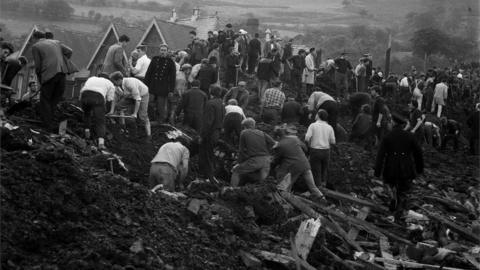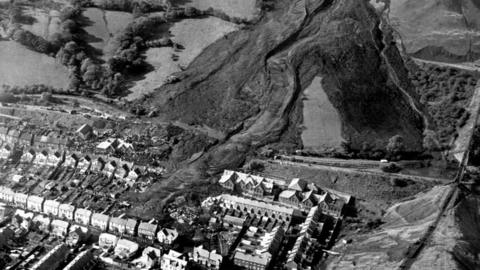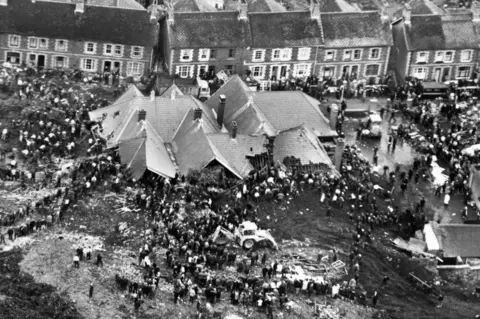Remembering Aberfan: A Village's Enduring Tragedy And Resilience
Today marks the anniversary of one of the most heartbreaking industrial disasters in British history: the Aberfan disaster. On 21 October 1966, the small Welsh mining village of Aberfan was forever scarred by a catastrophic event that claimed the lives of an entire generation of its children. It’s a date etched into the collective memory of Wales and beyond, a poignant reminder of the devastating consequences of industrial negligence and the incredible resilience of a community.
The Day the Mountain Fell: October 21, 1966
The morning of October 21, 1966, began like any other Friday in Aberfan. Children were at Pantglas Junior School, ready for the half-term break, and adults were going about their daily routines. Unbeknownst to them, a silent, deadly threat loomed above their village: a massive spoil tip, an enormous mound of waste material from the Merthyr Vale Colliery. This tip, one of several created on the mountain slope above the village, had grown steadily over the years, accumulating millions of tons of coal waste, shale, and slag.
For some time, there had been underlying concerns about the tips, though residents couldn't have known the horror that was about to unfold. They didn't know what was coming, and while they might have been worried, the scale of the impending catastrophe was unimaginable. Heavy rain had fallen relentlessly in the days leading up to the disaster, saturating the already unstable material. Finally, at approximately 9:15 AM, the unthinkable happened. The tip, specifically Tip 7, became waterlogged and suddenly slid down the hillside. It wasn't a slow collapse; it was a rapid, unstoppable wave of black sludge, debris, and rock.
The catastrophic collapse of this colliery spoil tip engulfed everything in its path. In a matter of minutes, the avalanche of waste descended upon the village, burying Pantglas Junior School and 20 houses along Moy Road. The sheer force and speed of the slide left no time for escape. The sounds of a vibrant school morning were replaced by an eerie silence, broken only by the desperate cries of rescuers.
The Unfathomable Loss: A Generation Lost
In the immediate aftermath, the true scale of the disaster became horrifyingly clear. One hundred and forty-four people were dead. The numbers alone are staggering, but the breakdown reveals the true depth of the tragedy: 116 of them were children, mostly pupils at Pantglas Junior School, and 28 were adults. Half of the village’s children had been killed in an instant. It’s a statistic that still brings tears to the eyes of anyone who hears the name Aberfan. The loss was so profound that entire families were decimated, and the fabric of the community was torn apart.
Stories of incredible bravery emerged from the rubble. Teachers, residents, and emergency services rushed to the scene, digging frantically with their bare hands, hoping to find survivors. There are countless tales of heroism, including that of a teacher who lost their life trying to get as many children as possible to safety. The image of a community united in grief and desperate search efforts is a powerful, yet heart-wrenching, testament to the human spirit in the face of overwhelming despair.
A Nation's Grief and the Royal Response
The Aberfan disaster sent shockwaves across the United Kingdom and the world. The raw grief of the community was palpable, and the nation mourned with them. Public attention also turned to the response of the Royal Family, particularly Queen Elizabeth II. As depicted in popular culture, such as the series The Crown (in season 3, episode 3), there was significant public discussion about the Queen's initial delay in visiting the disaster site.
The real Queen took a few days to visit Aberfan after the disaster, arriving on day four. This delay was reportedly due to her concern that her presence might overshadow the rescue efforts or appear to be "playing to the gallery." While some believed this was the right decision, aiming to avoid drawing attention away from the immediate humanitarian crisis, she was indeed "ripped apart in the press for it" at the time. Her eventual visit, marked by genuine emotion and empathy, is now widely seen as a pivotal moment in her reign, though the initial delay remains a point of historical discussion.
The Lingering Scars and Lessons Learned
The aftermath of Aberfan was not just about mourning; it was about accountability and prevention. A tribunal of inquiry was immediately established, which ultimately found the National Coal Board (NCB) responsible for the disaster due to "a terrifying tale of bungling ineptitude." The inquiry highlighted a severe lack of understanding of the geological conditions and the dangers posed by the spoil tips. The report was scathing, and its findings led to significant changes in mining safety regulations across the UK.
For the Aberfan residents, the immediate concern after the tragedy was the remaining spoil tips. Entirely understandably, they wanted the remaining silos moved away from the mountain uphill of them. The government, which had responsibility for these industrial sites, faced immense pressure to act. While the removal of the tips was a long and arduous process, it eventually happened, a testament to the community's persistent advocacy and the lessons learned from the catastrophic event.
The Aberfan disaster became a powerful symbol of the human cost of industrial negligence and the importance of robust safety protocols. It underscored the need for regulatory bodies to prioritize human life over economic expediency and to listen to the concerns of local communities. The memory of Aberfan has driven advancements in civil engineering and environmental safety, ensuring that such a tragedy would never be repeated.
Remembering Aberfan Today
Even decades later, the name Aberfan evokes a profound sense of sadness and remembrance. For many, like those who recently discovered the story through shows like The Crown, it's a shocking and emotional introduction to a dark chapter of history. "I can't even hear the name Aberfan without tearing up. It's so horrible," is a sentiment shared by countless individuals who understand the immense suffering endured by the village.
The Aberfan disaster serves as a permanent reminder of the fragility of life, the strength of community bonds, and the enduring importance of vigilance in industrial safety. Each anniversary is not just a day of mourning but also a day of reflection, ensuring that the 144 lives lost, particularly the 116 children, are never forgotten. Their memory continues to inspire efforts to prevent future tragedies and to honor the resilience of a village that, despite unimaginable loss, found the strength to rebuild and remember.
In summary, the Aberfan disaster of October 21, 1966, was a catastrophic collapse of a coal mine spoil tip, claiming 144 lives, predominantly children. Caused by heavy rain and industrial negligence, it devastated the Welsh village, leading to widespread grief and a pivotal inquiry that transformed industrial safety. The event also sparked debate over the Queen's delayed visit and remains a powerful symbol of loss, resilience, and the critical importance of remembering past tragedies to prevent future ones.

Aberfan disaster: 50th anniversary marked with silence - BBC News

Aberfan disaster: 50th anniversary marked with silence - BBC News

Aberfan disaster: The Queen's regret after tragedy